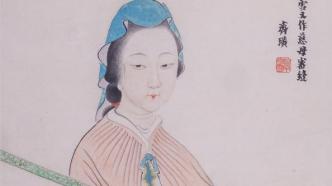
Hosted by the Shanghai Academy of Chinese Painting, "Creating Landscapes from the Mind—Research Exhibition of Figure Paintings of the Ming and Qing Dynasties Collected by the Shanghai Academy of Chinese Painting" is being held at the Cheng Shifa Art Museum. The exhibition focuses on famous masters of the Ming and Qing Dynasties, and selects more than 40 pieces/groups of treasures from the Academy's collection, involving portraiture, high-ranking scholars, ladies, Taoist and Buddhist figure paintings of different themes.
Although Chinese figure painting was "not as good as the ancients" during the period when literati painting was popular, the development of figure painting in the Ming and Qing Dynasties showed a new turn and significant breakthrough in the decline, and a group of unique and innovative figure painters and genres emerged. For example, the group of painters in this exhibition: Zeng Jing, who "portrays like a shadow", Xu Wei, who is full of ink, Chen Hongshou, who is ancient and horrifying, the representative of Yangzhou Eight Monsters who is full of personality, and the "Three Rens" of the Shanghai School of Painting, which are both refined and popular. They will travel through time and space, leading the audience to appreciate the artistic charm of figure paintings in Ming and Qing Dynasties, and understand their different voices.
"The Paper · Ancient Art" specially interprets the key works.
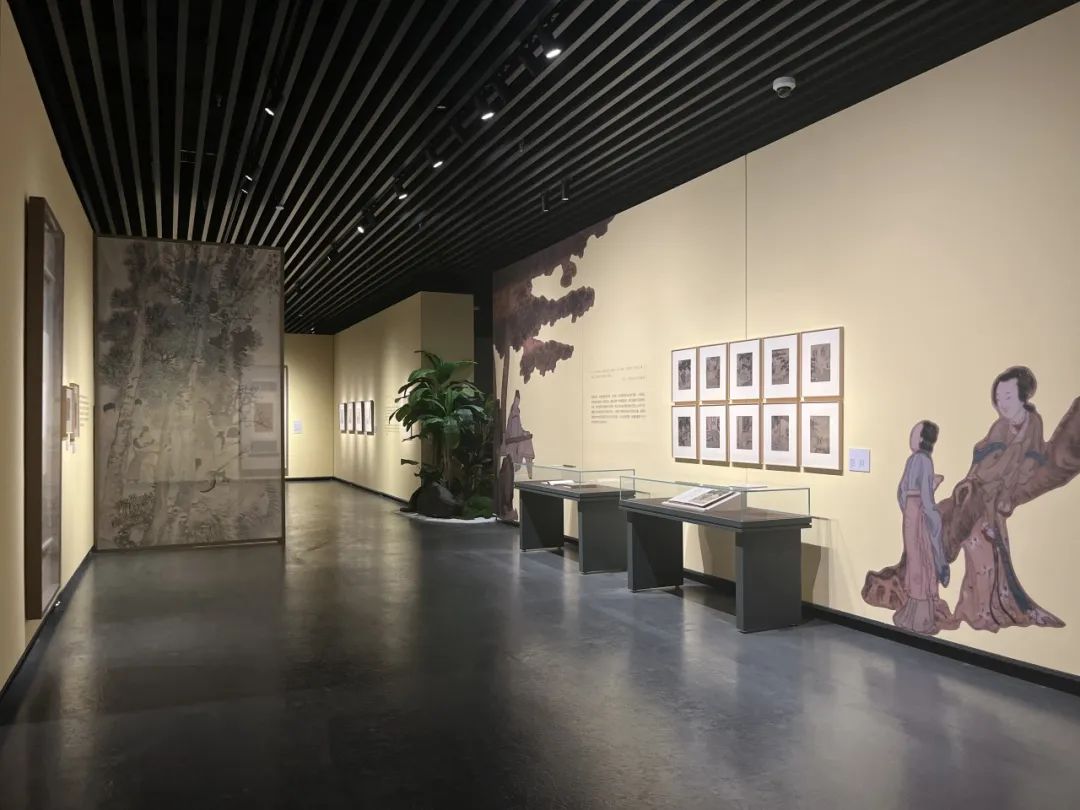
exhibition site

exhibition site
The exhibition is titled "Creating the Landscape with the Heart", and is divided into three sections: the world is colorful, the old is new, and Taoism is colorful. Works such as "Portrait of Chen Yupu" and "Sketches of Characters in the Qing Dynasty" in "Multiple Worlds" depict real characters in life from different angles, showing their living conditions and secular emotions. Works such as "Dongshan Silk and Bamboo", "Hairpin Flowers and a Stick", and "Lady Holding a Sword" in the section of "Making the Past into the New" show that painters pursue the values and ideals of sages and traditional literati paintings. Immortal figures such as "Zhong Kui" and "Tieguai Li" in the "Daoshi Ruicai" section entrust the secular feelings and the inner expression of transcendence from the free and easy vertical and horizontal, pungent and powerful brushwork.
Atlas of refugees in the rivers and lakes

The Yellow Dog, Ren Xun, ink and color on paper, 26×36cm, 1876

The status of the report of the refugees in the rivers and lakes

Rivers and lakes refugees atlas: holding children and begging for food
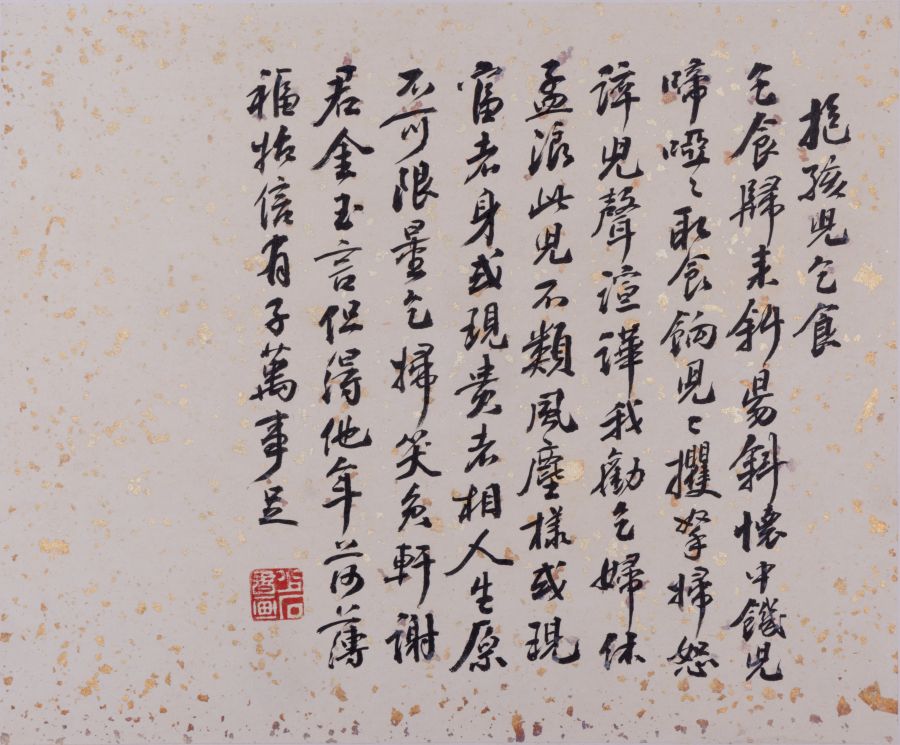
Jianghu Refugees Atlas: Holding Children and Begging for Food
This exhibition exhibits ten pages from Ren Xun's "The Atlas of the Vagabonds of the Rivers and Lakes". In the paintings, there are people holding bamboo sticks and holding bamboo baskets, who are engaged in snake taming, snake hunting, and snake handling; The composition of the picture is novel, one picture represents a character, the lines are concise, without background, the shape is slightly exaggerated but realistic, and with different clothing and objects, different character identities are created. The style of painting has the characteristics of Chen Hongshou's metamorphosis in the late Ming Dynasty. The expressions and expressions of the characters are mostly sad, reflecting the real social reality at that time, and they are quite realistic.
Sketches of characters in the Qing Dynasty
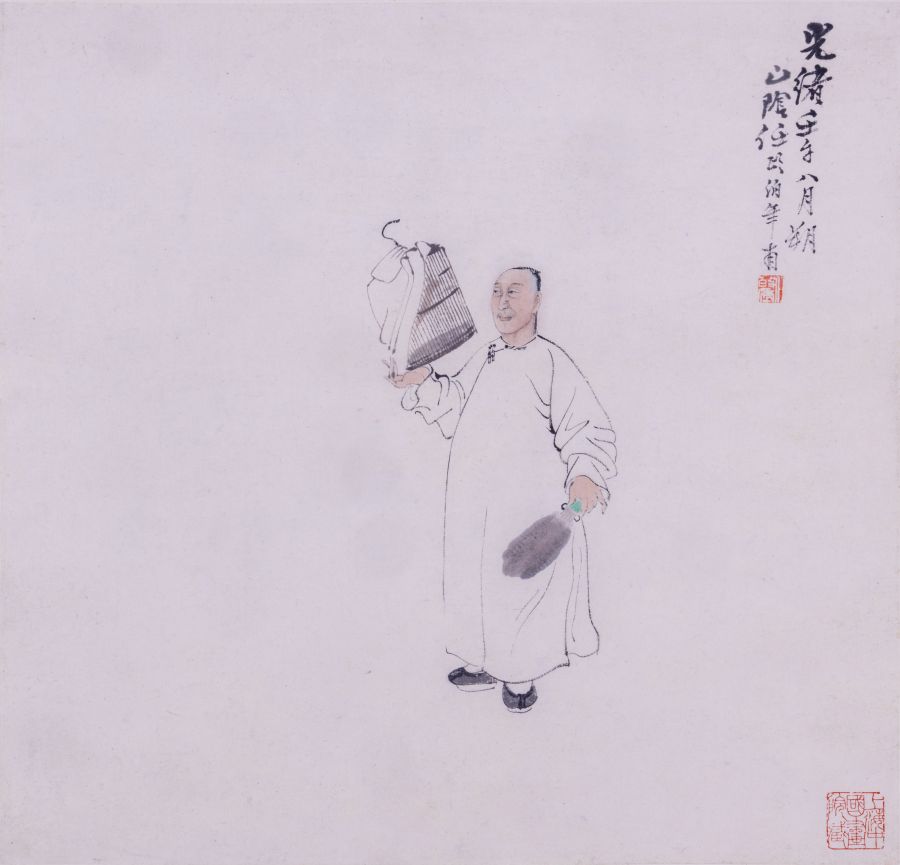
Qing Dynasty Figure Sketch, Ren Yi, ink and color on paper, 35×36cm, 1882
At the end of the Qing Dynasty and the beginning of the Republic of China, people dressed in long gowns could be seen everywhere on the street "carrying cages and carrying birds". At that time, raising birds was not only an entertainment activity, but also a symbol of status and finances. This axis depicts the image of a gentry holding a fan in one hand and a birdcage in the other. Influenced by his father when he was young, Ren Bo developed the painting skills of Molin. Later, he got in touch with Liu Dezhai, the director of Tushanwan Art Museum, and got involved in the modeling skills of Western sketching. This axis has smooth lines and both form and spirit, which shows his profound skills in figure painting and sketching.
This work has integrated Western sketching techniques. The characters in the painting are sketched in line and slightly rendered, but the perspective of the characters is reasonable. There is a stroke of white on the head, explaining the turning point of the parietal bone, and the brow bone and mandible are slightly dyed. Not only does it have changes in light and shadow, but the figure is more three-dimensional and vivid.
Statue of Chen Yupu

Portrait of Chen Yupu, Zeng Jing and Zhang Chong, ink and color on silk, 38×167.5cm, 1633

Statue of Chen Yupu
In this painting, Zeng Jing painted the figures, and Zhang Chong added the garden scenery. In the painting, Chen Yupu sits leaning on the rocks of the lake, dressed in light and elegant colors, with a beard and smiling eyes, calm and contented, which is a portrayal of the literati's joyful expression. There are two children in the corner, with innocent expressions and vivid postures. In the garden, the sun is shaded by tung trees, the lotus leaves are lush, plantains, cattail grass and other green plants are overgrown, and only a corner of the pavilion is exposed in the distance, hidden among the natural vegetation, creating a peaceful and peaceful scene.
Zeng Jing was an important portrait painter in the late Ming Dynasty. He once painted portraits of Dong Qichang, Chen Jiru, Wang Shimin and others who were quite famous at that time. At the back of this volume is the textual research inscription and postscript of Mr. Cheng Shifa, which indicates the postscript of the eleven families in the original volume. We can get a glimpse of the friends and contacts of literati at that time.
Ladies holding swords
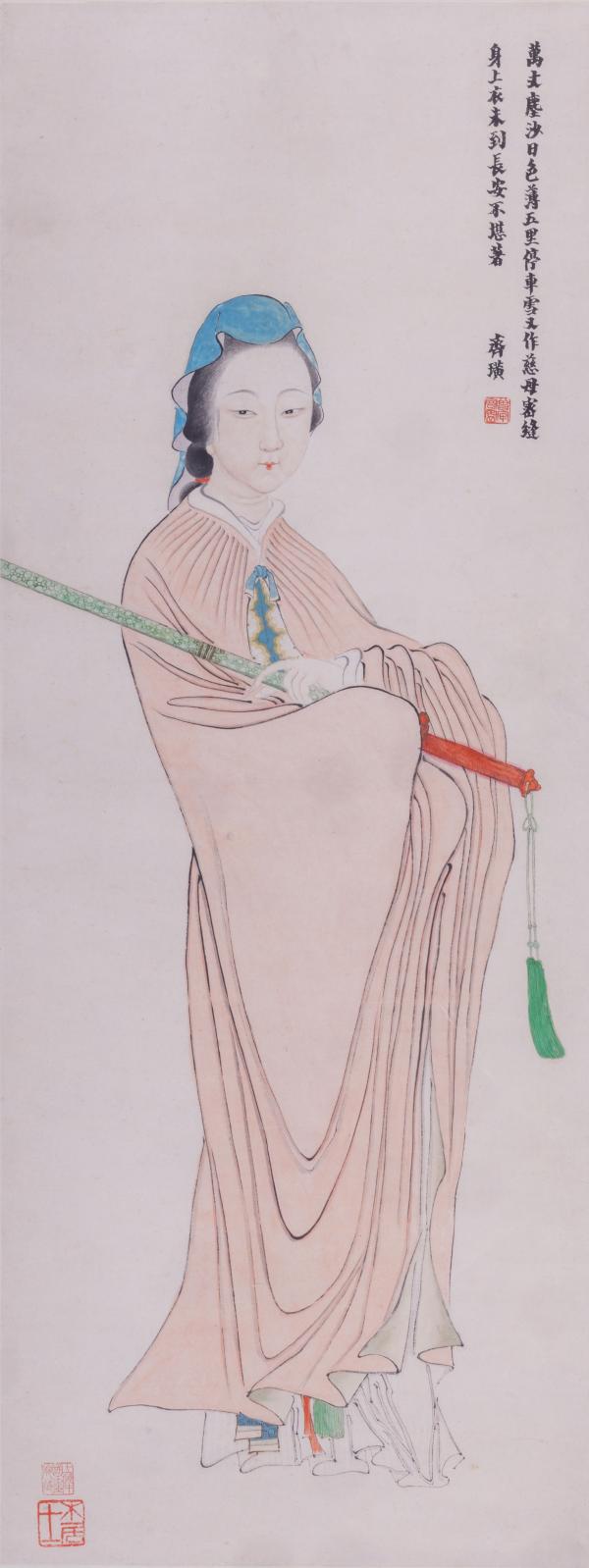
Lady holding a sword, Qi Baishi, ink and color on paper, 112×42.5cm, date unknown
The artist inscribed the seven-character quatrains in Jin Dongxin's calligraphy style: "The dust and sand in the ten thousand zhang, the sun is thin, and the snow is snowing again in the five-mile car park. But the open faces and smudges of the characters like Gaiqi and Fei Danxu follow the old paintings of beautiful women in the late Qing Dynasty, with slight variations. The characters in the painting are delicate and beautiful, with melon-seeded faces, willow-leaf-browed eyebrows, small cherry mouths, swords in arms, and expressive eyebrows, showing a handsome and heroic spirit. The skirt is elegant, the lines are round and smooth, and the pleats of the cloak are reminiscent of Chen Hongshou. An image of going out and about to travel is vividly displayed on the paper, making the viewer feel the elegant quality of a lady, as well as the strength of perseverance and self-confidence. Qi Baishi used to have the reputation of "Qi Meiren". He was often asked for paintings of beautiful women, and he often painted Xi Shi, Luoshen, Wen Ji returned to Han, and Mulan joined the army. This work should be one of such works.
Holder lady

Lady Holding Se, Huayan, ink and color on silk, 117×60cm, Qing Dynasty
Through the January window, the scroll depicts a lady in green and red, sitting cross-legged on the couch with a bow in her arms, nodding her head and lowering her eyebrows, in a contemplative state. Outside the round window, the stones of Taihu Lake have a unique and unique posture, which is shaded by phoenix trees and secluded bamboo trees, which is quiet and elegant. The lines in the whole picture are strong, and the color is as precious as gold, which is elegant and gorgeous, exuding a elegant and luxurious atmosphere. The figure's clothing pattern is drawn with orchid leaves, drawing the soft and fluffy feeling of the textile, forming a contrast with the different materials of the xylophone, wooden couch, and woven cushion, which can be seen in the artist's brushwork. There is a four-character long sentence inscribed by Hua Yan himself on the painting. In the poem inscribed on the painting, the artist used "painted temple hair and curly eyebrows" to describe it, which not only expressed his satisfaction with this work, but also demonstrated his calligraphy skills.
Dongshan Silk and Bamboo Painting

Dongshan silk and bamboo, Ren Yi, ink and color on paper, 135×61.5cm, 1886
This picture depicts the allusion of Xie An's seclusion in Dongshan in the Eastern Jin Dynasty, and the allusion of silk and bamboo. Xie An is deeply loved by literati and refined scholars. He is known as "listen to the sound of silk and bamboo, and the world will be governed", which has also become a classic motif for literati to pursue an ideal state. Ren Bonian placed Mrs. Xie in a beautiful and peaceful mountain forest, and sat at a desk to listen. A lady caressed Ruan and played the flute, which brought out the master's high-yield feelings. Ren Bonian painted several "Dongshan Silk and Bamboo Paintings" before his death. In the inscription of the edition in the National Art Museum of China, he wrote: "The Xinluo Mountain People's "Dongshan Bringing Prostitutes" is just a slight imitation, imitating the imitation, which is hilarious! The book is ashamed." It can be seen that Ren Bonian has conducted in-depth research on Huayan's such subjects.
Hairpin flower wriggling stick figure

Hairpin Flowers and Sticks, Ming Dynasty Chen Hongshou, 69×41cm, hanging scroll, ink and color on silk
Chen Hongshou's paintings were first influenced by Lan Ying, and later extensively learned from the ancients, and boldly innovated. The figures, flowers and birds he created were ancient and clumsy, and he was good at using exaggerated and deformed techniques, which made him a school of his own. It had a far-reaching influence on later generations and opened up a new realm of Chinese figure painting from the revival of the Jin and Tang Dynasties to the modern transformation.
This "Picture of Hairpin Flowers and Sticks" is the work of Lao Lian when she was mature. The characters in the painting are tall and strange, with big ears and wide jaws, low eyebrows and deep thoughts, walking alone with a gun. The clothes are drawn with gossamer, the lines are round and smooth, and the colors are simple and elegant. It has shaped Gao Shi's spiritual realm of aloofness, integrity, and detachment. The Chen family often painted the images of high scholars with sticks and hairpins, such as Yang Shen, Tao Yuanming and others. This not only reflects Chen's lofty mind and unrestrained personality, but also an inner portrayal of his extraordinary bearing.
Dharma

Bodhidharma, Chen Hongshou, ink and color on paper, 95×52cm, Ming Dynasty
This piece of "Dharma" by Chen Hongshou has an ancient appearance, and at a glance it is the solemn appearance of a god. Bodhidharma, a monk in the Southern and Northern Dynasties, a South Indian, whose name translates as "Juefa". During the Northern Wei Dynasty, he once preached in Songshan and was the founder of Zen Buddhism. On a small painting, Chen Hongshou uses thick and firm lines to express the majesty of Bodhidharma. The lines bend freely, dry and wet naturally, which not only has the painter's brushwork, but also somewhat resembles the lines of the Northern Dynasty statues. A kind of ancient meaning is vivid on the paper, and the most important spirit of Chinese painting is alive. Observing the details, it is said that "drawing a person is difficult to draw hands". The lines of Bodhidharma's hands on the screen are not as thick as the clothes, but they are drawn with iron lines. At the same time, the sticks held are higher than others, and the lines are unpredictable and not perverted, which is exactly in line with the overall style of Bodhidharma.
Zhong Kui
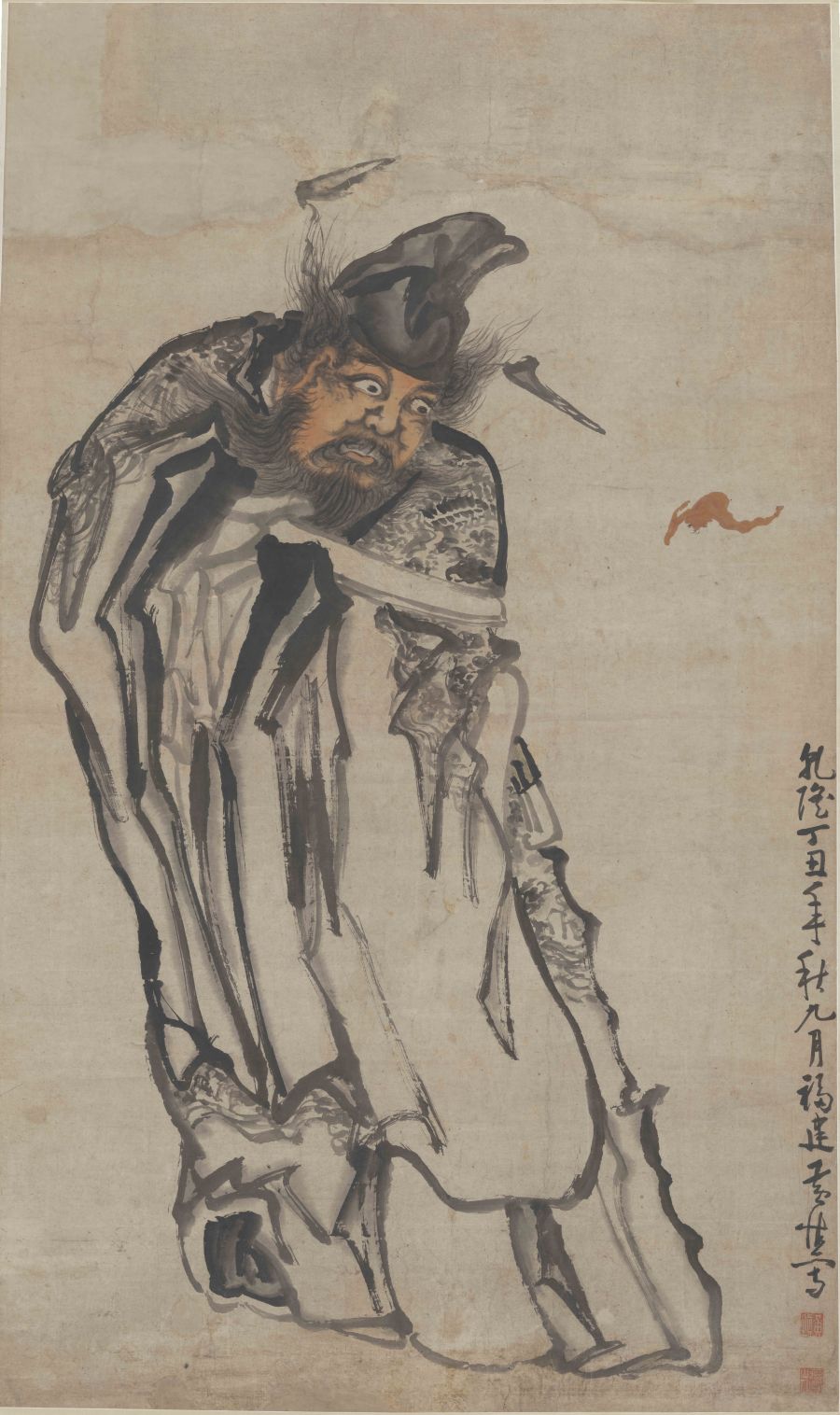
Zhong Kui, Huang Shen, ink and color on paper, 170.5×102cm, 1757
This work depicts Zhong Kui. After the Tang Dynasty, Zhong Kui became popular among the people. The so-called "elimination of all evils" was deeply revered by the people. Especially on the day of the Dragon Boat Festival, it has become a custom for every family to hang the image of Zhong Kui to ward off evil spirits. The expression and posture of Zhong Kui are painted with unique ingenuity, and the viewer is immediately attracted by it. At the same time, his lines are twisted and changeable, unrecognizable, not blindly kitsch, without artificiality, even a little obscure, ancient and unattainable. The style of the picture has also been improved, and both elegance and vulgarity are taken into account, and each has its place. The eyes of the characters are fascinating, staring closely at the bat. The so-called "bat (blessing) is in front of you" is quite festive.
Samantabhadra Bodhisattva
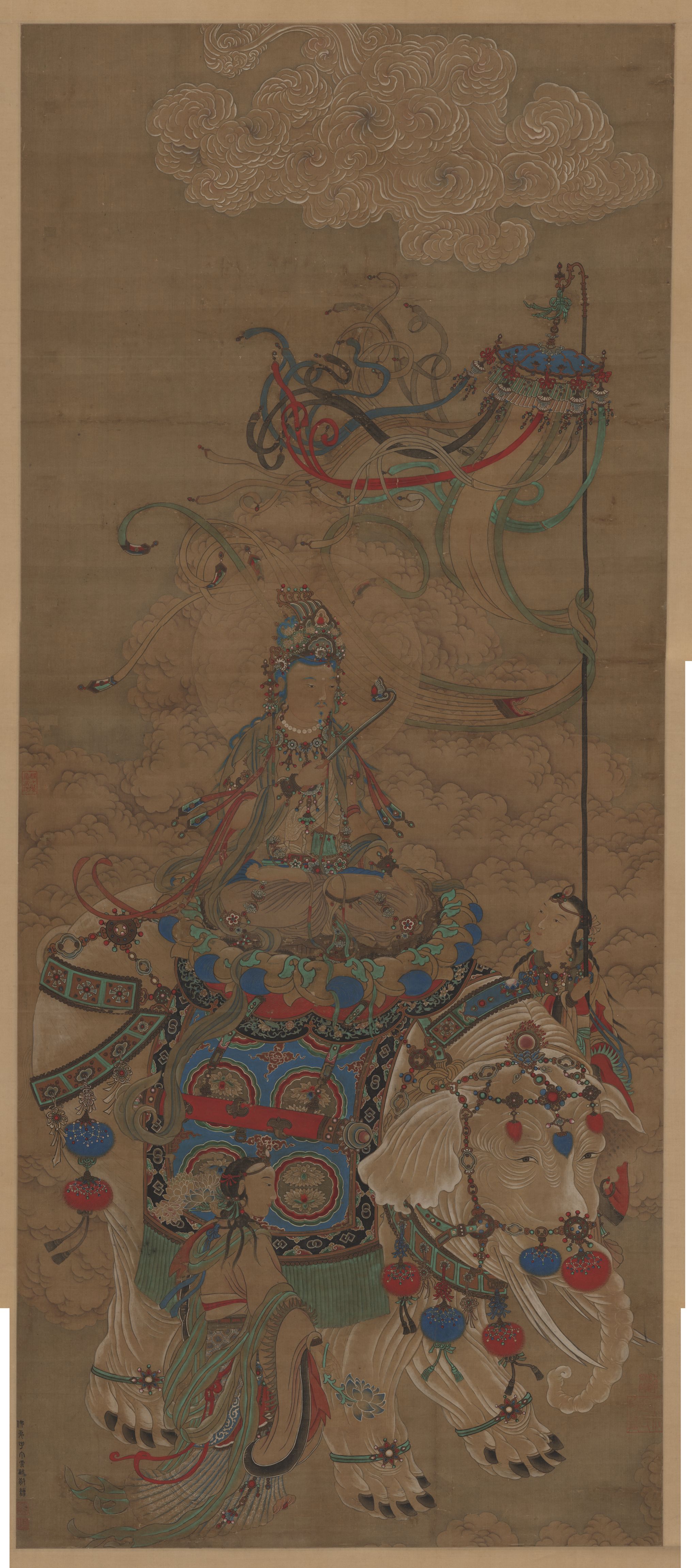
The image of Samantabhadra Bodhisattva, Ding Yunpeng, ink and color on silk, 189×80cm, Ming Dynasty
Samantabhadra is a free translation of the Indian Sanskrit "Sammandobadhara" (that is, universal virtuousness). He symbolizes the truth and belongs to the Buddhist Mahayana Bodhisattva, and the six-tusk white elephant is his legal mount. Samantabhadra Bodhisattva and Manjusri Bodhisattva are the servants of Sakyamuni Buddha, that is, Manjusri rides a lion to serve the Tathagata on one side, and Samantabhadra rides a white elephant to serve the other side. This work is suspected to be one of the Sanlian landscape paintings.
In the painting, the condensed and peaceful Samantabhadra wears a corolla of pearls on his head, a wreath hanging on his chest, and holds a long ruyi handle in his hand. He sits in lotus pose on a white elephant. The two boys on the left and right hold a canopy and a white lotus. Auspicious clouds are dotted between the frames, creating an atmosphere of majesty and majesty, and surging fairy spirit. "Buddhist disciple" Ding used the "iron line drawing" of spring silkworms spinning silk, the brush strokes are centered, and the details are meticulous. It is impossible to do it calmly. The mineral pigments on the painting are still shining after more than 400 years, arousing the heart of piety.
Tieguai Li
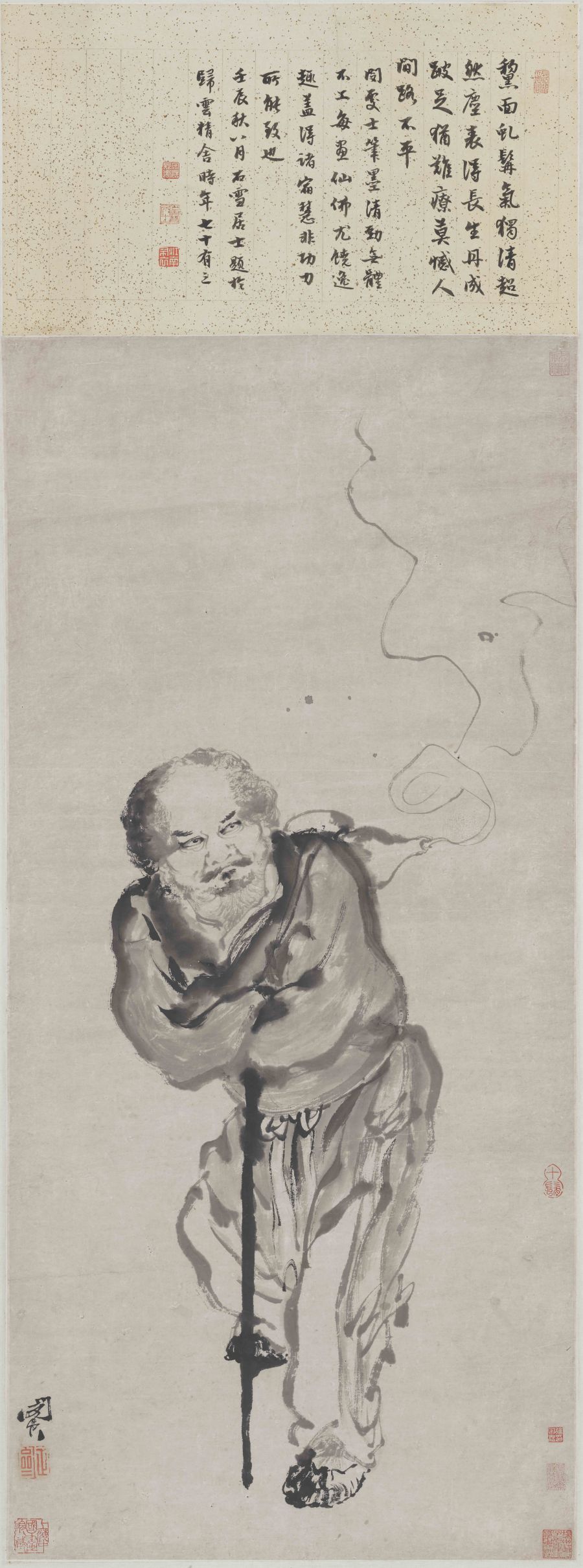
Tieguai Li, Min Zhen, ink wash on paper, 81×38cm, Qing Dynasty
This scroll depicts a frontal portrait of Tieguai Li, bowed and hunchbacked, with a gourd on his back, a few wisps of fairy air floating out, staring into the distance with a stick, with a few strokes, his demeanor is perfect, and he is full of refined spirit. The characters are drawn with thick and thin ink brushes, which are smooth, sharp and vigorous. In the painting, the outline of Tieguai Li's clothes and the structural lines at the turning points are drawn with extremely thick lines, and then scraped with light ink. In contrast to the costumes, the depiction of the face is more detailed. For example, the eyes are first outlined with light ink, and then the eye sockets, pupils and eyebrows are outlined with thick ink. The eyes are sharp and piercing. The hair and beard are drawn with curly strokes, thus expressing the image of Tieguai Li as a beggar in myths and legends with unkempt hair and ragged clothes. From the inscription on the painting, it can be seen that this work was once in the collection of Xu Zonghao, a modern collector, and later transferred to Cheng Shifa's collection.
The First Body of Amitayus
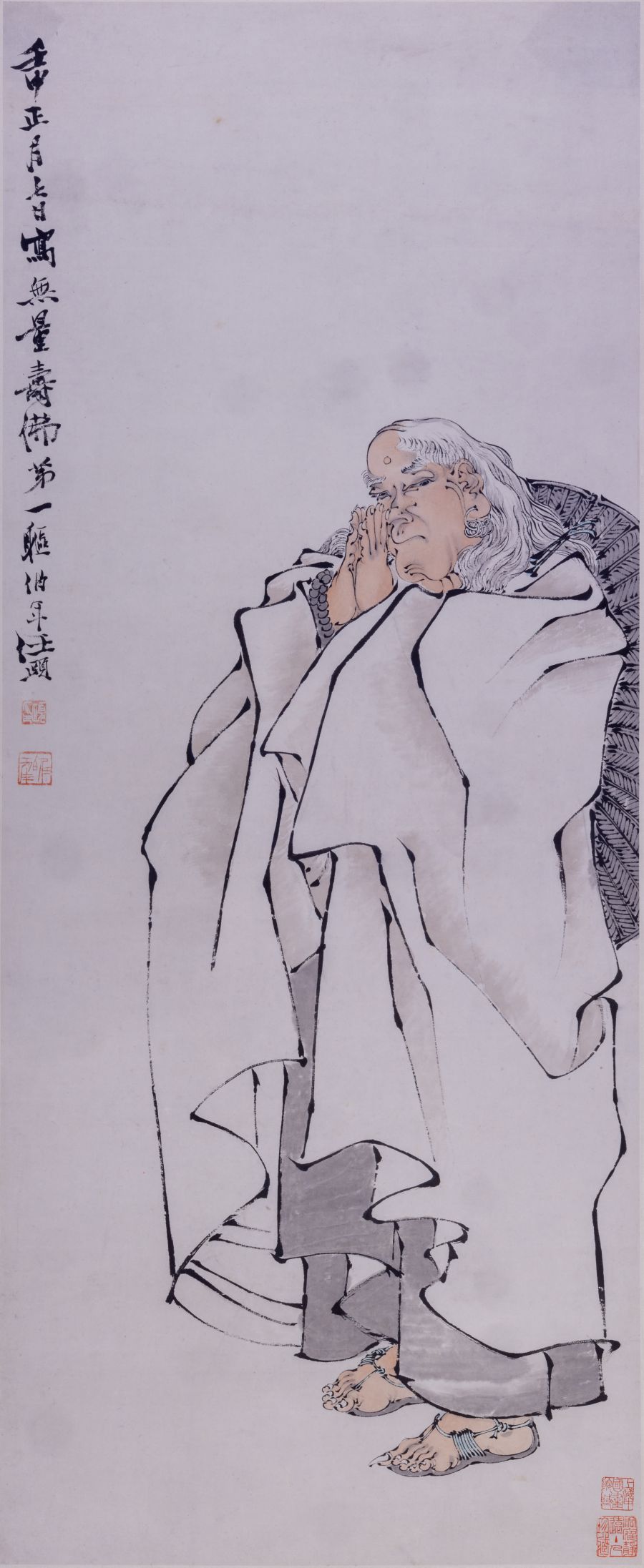
The first body of Amitayus, Ren Yi, ink and color on paper, 112×45.5cm, 1872
As a professional painter, Ren Yi painted a lot of Taoist and Buddhist figure paintings. His works are similar to those of Chen Hongshou, and he also absorbed the painting methods of Jin Nong, Hua Yan and others, which are varied and spontaneous. Amitayus, commonly known as Longevity Buddha, also known as Amitabha, is compared to a symbol of happiness and longevity. Generally, it is painted as an old man sitting on a futon in knotted lotus, while Ren's is an old man with curly hair, standing with palms together with bare feet, which has a novel idea. He also used gold and stone brushwork to enter the painting, with a few brush strokes, and a few strokes with both shape and spirit, portraying a benevolent, kind-eyed, and grand demeanor. The popularity of this kind of picture title should be directly related to the market demand at that time. Auspicious paintings have become more and more popular since the middle of the Ming Dynasty. They were often given as gifts to others, and some were sold as commercial paintings.
Note: The exhibition will last until October 18. This article is provided by Shanghai Academy of Chinese Painting.

